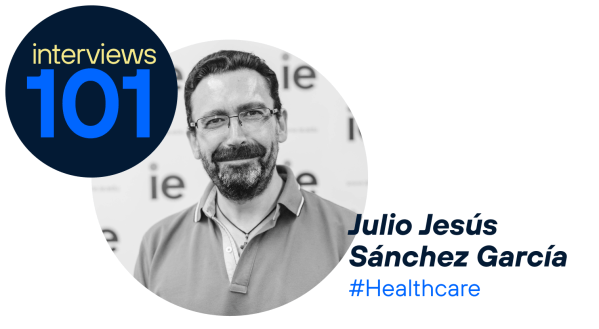If you don’t know what I’m talking about, here is a summary of the actions I proposed:
- Write down what motivates you to want to apply conscious time management.
- Try to register all your pending tasks, both work and personal.
- Prioritise each task according to your goals. If you think it will take more than 25 minutes to complete, divide it into several tasks.
- Make sure that, when it is a task’s turn, you have everything you need to complete it.
- Block out time in advance in your calendar.
- Weekly review your to-do list to prioritise them, and decide which ones to focus on.
- On a daily basis, look at the gaps in your calendar and choose which priority tasks to focus on and in what order.
- If you falter, remember what motivated you to apply these time management techniques and be patient.
In this installment we will focus on the first point: finding the motivation to apply a healthy time management method in a sustained manner.
What am I doing with my time?
Time management advice often promotes the idea that maybe you are not doing enough, that one day you will be able to ‘do it all’ and become the master of your time, if you try hard enough, and act in a fully optimised and emotionally invincible way each and every day. And I don’t know about you, the thought that I should still be doing more things than I do, or faster, gives me some angst.
But you are in luck, because Healthy Time Management is not about that, but about building a meaningful life, achievable goals and a commitment to everything that is really worthwhile, and the first of these ideas is that you must be aware of the finiteness of life.
We all know that a day has 24 hours, that we all wake up with the same number of hours ahead of us, and yet many days we are certain that life is going to run over us and that, when we go to sleep, we will hardly know what we have spent them on.
And yet, have you ever wondered how much time you have left to enjoy? How many more days do you have to let time go by without knowing what you have spent it on? The average human life span is ridiculously short: if you reach the age of 80, you will have lived more than 4,000 weeks.
At this point you should stop for a minute and calculate in which week of life you are … have you been surprised, what are you going to do now?
If you want to go deeper into these concepts, I advise you to read Oliver Bukerman’s book ’4,000 weeks. Time management for humans’.
Do I know what I want to do with my time?
– Do you mind telling me, please, which path I should take from here?
– That depends very much on where you want to go,’ said the Cat.
– I don’t much care where…! — said Alice.
– Then it doesn’t matter which way — said the Cat, whichever way you go is all right!”
Alice’s Adventures in Wonderland – Lewis Carroll
If you were told that tomorrow you were free from all your duties, that you could have your time as you liked and for what you liked, would you know what you would choose to do?
I’m sure you could tell me hundreds of things you’ve always wanted to do or try. In this hypothetical case, do you think you would have time to complete the whole list, will it remain static or will it keep growing with new things to do?
Now that you are aware that human beings are capable of imagining enough things to do to fill three lifetimes and yet you only have a limited amount of time, you should know that managing it is not about figuring out how to do it all– this will never happen – but about deciding what to stop doing, what to devote your efforts to at any given moment and feeling at peace with it.
So whether you have to continue with your obligations or you can devote yourself to whatever you want, the first thing is to have a compass to guide you in choosing, among the tasks on that list, what to do next in order to get closer to your goals.
It is easy to say it, but not so easy to put it into practice: do you know what you are doing with your time, do you really do what you need to do and what you have chosen, does it bring you closer to your professional or personal goals, are you clear about what those goals are, and are you clear about what you want to do? Are you clear about what those goals are and what you want to achieve with them?
So many difficult questions. If you don’t like the answer that your unconscious mind has been giving to each one of them, then you need to make changes.
Don’t worry if at this point you are thinking that it is not worth the effort, that changing is going to take more time and energy than staying the way you are, it is normal. Our mind fights harder not to lose, to keep what it has, than to achieve something, even if it knows that in the long run it will benefit.
Find your compass
It is essential that you find the motivation to overcome the initial barrier, a motivation that motivates you to apply healthy time management. Some of the most common ones may be: spending more time with your family and/or friends, feeling that you decide about your time, improving your productivity or your health, feeling more serenity, etc.
Summarise it in a sentence and write it down where you can read it every day. Try to make them positive phrases that make you feel good. For example, it would be better as a motivation ‘To feel calm and that I choose what I do’ than ‘to stop having stress and to stop doing for the sake of doing without a head’.
I also want to tell you a trick. If you are afraid of having it exposed where others can read it, try to summarise it in one word and set the password to the PC with it. Following the previous example it could be: ‘Trank1la’ or ‘elijo_Y0’. The important thing is that it connects you with the motivation.
In addition, you could imagine what that ideal moment would be like, where you would be, with whom, how you would feel. If you feel up to it, look for an image among your photos or on the Internet that takes you to that moment.
Another trick: set that image as wallpaper on your PC or mobile phone, or print it out and put it where you can see it. Only you will know what it means.
Now it’s time for your work and personal goals. Use the SMART (Specific, Measurable, Achievable, Relevant, Time-bound) methodology to define them. And as before, summarise them in a short sentence and, if you can, with an image.
For example: ‘Prioritise daily tasks for the next month, at least 90% of working days to select the most important tasks to focus on’, ‘Complete at least 1 important task before reading email or Teamsmessages’, ‘This term dedicate 2 hours a week to training in … or to go to the gym’ or well, ‘I’m going to work on the most important tasks’. or to go to the gym’ or “for the next 15 days, spend 1 hour a day with my children, without having my mobile phone in my hand and without thinking about work”.
You can define as many as you want, although it is advisable to start with 4 or 5, make sure they are compatible, i.e. that achieving one does not detract from the possibility of achieving another, and prioritise them among themselves.
Learn to read the map
Now that you know what you want and what motivates you, you should apply a method that will help you achieve your time management goals in a healthy way. My proposal is to use David Allen’s ‘Getting Things Done’ (GTD) method as a basis, which I will summarise below.
According to the author, if we want to manage our commitments without stress, we must be able to objectively evaluate each new thing that appears, and know how to integrate it into our lives with the appropriate level of reaction. And that requires a method that allows you to stop constantly thinking about the things you should be doing and are not doing, so that you can relax, feel in control and that you are doing, or not doing, just what you should be doing.
The GTD method is based on 5 phases:
- Capture all the tasks that you have committed or tasks that you want to do or information that may be useful at another time, in a reliable system and external to your memory.
- Clarify what they mean and what you want to do with them.
- Organise or process each one to put it in its place.
- Review periodically.
- Surrender to action.
This method will allow you to make decisions in advance, so that you have an inventory of possible next actions, and to coordinate this with different levels of commitment to yourself and others.
You can apply this method fully and continuously to your work and personal world, or partially where you feel you need it, or sporadically when you feel you are losing control. In any case, try to start with something simple, and make it part of your routine before undertaking the next improvement.
What next?
The principles and strategies that GTD proposes are immediately applicable to all aspects of your life, but I’m not going to fool you, applying them, while simple, is not magic, and will require some effort and commitment on your part.
In the following articles I will go through each phase of the method one by one, so that you can get to know these principles and strategies and put them into practice. In the meantime, take the opportunity to find your motivation and define the goals you want to achieve in order to manage your time in a healthy way.
If you already have it and want to keep moving forward, try the following points from the initial list, or read more about the GTD method.
If you falter, remember what motivated you to apply healthy time management techniques. Take action and enjoy the journey!
‘Live as if you were to die tomorrow, learn as if you were to live forever’ – Mahatma Gandhi.












